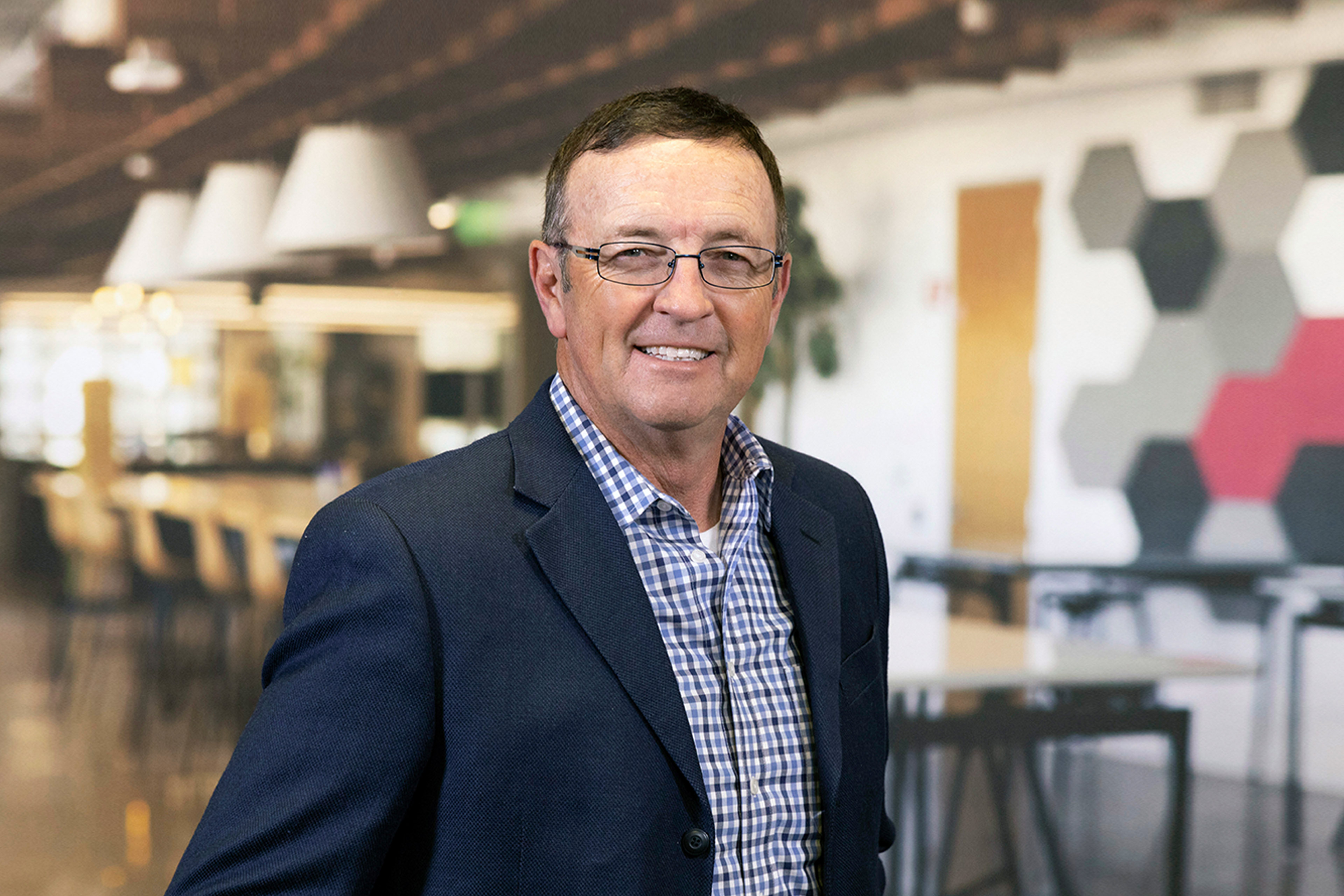EY refers to the global organization, and may refer to one or more, of the member firms of Ernst & Young Global Limited, each of which is a separate legal entity. Ernst & Young Global Limited, a UK company limited by guarantee, does not provide services to clients.
Taking the long view is helping New Relic scale into the billions
Ernst & Young LLP helped an $850M+ revenue all-in-one observability firm reimagine processes and technology architecture to serve customers.

The better the question
What’s the prescription for growth for an observability company?
New Relic needed to evolve its internal processes to scale up.
Technology startups live in the fast lane – but the road from garage to global leader can be full of speed bumps. In the first phase of a startup, technology and processes like quoting product sales or software used for accounting or planning are often off-the-shelf solutions, purchased as needs grow. That can be relatively easy to manage for a smaller business with a dozen employees and with a few million in revenue. But as companies scale to thousands of employees, a diverse and growing customer base, and ambitions to grow their businesses, what once were small hiccups in systems and processes can end up hindering growth.
New Relic, an $850+ million revenue all-in-one observability company helping engineers at the world’s leading brands build great software, was facing this conundrum. When New Relic was started in 2008, it was a subscription-based software as a service (SaaS) product, with technology and operations that were perfect for hyper-scaling an agile startup.
Today, New Relic is a public company serving more than 15,000 global customers with a unified platform approach and consumption-based business model. It’s committed to giving the same great service to individual consumers, sole proprietorships and multinationals. After all, some of those tinkerers in their garages will become giants in their industries, and integral to New Relic’s strategy is supporting customers at every stage of their growth.
Serving both newcomers and giants at the same level means that New Relic’s business is increasingly complex, with millions of transactions to manage and increasing segments of service levels to provide. It was struggling with significant manual overhead in quoting for products, low integration and consistency between upstream and downstream data sets, and the extended time it took to transact and report business. Manual and disparate processes meant it couldn’t continue to scale and still give all of its customers the services they needed.

The better the answer
Looking at the big picture before leaping into the future
EY US helped New Relic reimagine processes and technology architecture to serve all its customers.
New Relic initially contacted Ernst & Young LLP (EY US) to discuss a new enterprise resource planning (ERP) system. In the initial review, the EY team identified some upstream deficiencies in driving sales transactions that were manifesting in downstream challenges in operations and finance. This is typical for hyper-growth companies, but New Relic’s ambitious evolution also called for an evolution of systems and processes.
Consultants can sometimes spend months analyzing symptoms but miss looking at the whole picture to identify underlying issues and connect potential solutions to the company’s overall business strategy.
“A lot of times a detailed analysis won’t do much. It leads to analysis paralysis, and it doesn’t change the problem; it just takes six weeks longer to tell you the answer,” says Jeff Balentine, Ernst & Young LLP partner.
Instead, in just a few days, the EY team advised New Relic’s leadership that a new ERP system would only go so far, and reframed the issue to ask: “What does New Relic’s process and technology architecture need to look like to operate as an industry leader?”
The EY team wanted to work with New Relic to discover root causes and ultimately suggest and prioritize changes that New Relic could invest in to help it scale.
At first, the amount of work felt overwhelming. But the EY team led us to create a multiyear technology roadmap anchored in our core business processes.
“By breaking down and sequencing the investments, we were able to achieve many of our milestones and create the world-class technology stack we have today.”
Through this reframing, EY US and New Relic worked together to align on a single vision and purpose – which became absolutely essential to allow EY US to follow threads back to root causes without roadblocks.
The transformation journey started with a quick maturity assessment, comparing New Relic to its peers. Next was discovery and review of the operations and technology architecture. The EY US team went into this process without preconceived ideas of issues or solutions, which was crucial to recognizing the root causes behind issues.
EY US then helped New Relic identify architecture options, priorities and sticking points, broken down into manageable projects, such as phasing in a quote-to-cash tool starting with core functionality and integrations to other core systems and a common data architecture to support New Relic’s operational data needs. All of the options and hypotheses were grounded in leading fit-for-purpose practices, which were reviewed and hotly debated with New Relic leaders and stakeholders. This collaboration played a key part in developing an aspirational architecture for New Relic and a multiyear roadmap that New Relic could execute and deliver on.
The EY team also included priorities, interdependencies, big issues and some quick wins for New Relic, including establishing a single and common data foundation and removing legacy integrations that weren’t bringing value to New Relic’s operations.

The better the world works
A roadmap to revolutionary change
New Relic’s agile, scalable process and technology model can serve customers at a much lower price.
Since EY US delivered the roadmap, New Relic has been hard at work with implementation. While New Relic is completing some initiatives on their own, EY US is assisting with many of the more complex changes. New Relic continues to follow the roadmap and work together with EY US to make sure it’s done right. The entire company is on board and taking an organizational view, rather than different leaders taking an independent “what’s in it for me” view. Though they are still in the middle of this multi-year effort, they are already reaping huge rewards — for instance, 60% of the manual steps in the quotation process have been eliminated.
“EY US has been a true collaborator to us in many challenging transformations,” says Julie Irish. “They have co-teamed with us to deliver maintainable and scalable technology solutions.
At first, the amount of work felt overwhelming. But the EY team led us to create a multiyear technology roadmap anchored in our core business processes.
New Relic recently made a revolutionary business model transformation from subscription to consumption. “During the past two years, we made the move from a subscription-based business to a consumption-based business model,” says Julie Irish. “Without these investments in technology, we would not have been able to pivot the business and reaccelerate our growth.”
Digital Transformation Services | EY - US
While the shift tested the agility of the roadmap and recommendations, with EY US and New Relic working together and New Relic’s discipline in implementing the architecture, the company made the switch in record time with relatively minimal changes required in process and technology.
With this transformation, New Relic can scale more quickly and easily and continue to provide valuable service to everyone at a much lower price, helping companies from mom-and-pop shops to multinationals to build a better working world.
How EY can help
-
Consulting at EY is building a better working world by realizing business transformation through the power of people, technology and innovation.
Read more -
Discover how EY's technology solution delivery team can support your organization as it initiates or undergoes major transformation.
Read more -
Discover how EY's digital transformation teams can help your business evolve quickly to seize opportunities and mitigate risks. Find out more.
Read more
Related articles
When customers change how they buy, should you change the way you sell?
Over 90% of companies have some revenues generated from XaaS models, driven by competitive pressures and market changes into new revenue streams. Learn more.
What to know when adopting subscription or consumption business models
How to face operational, financial and strategic challenges as companies consider making the traditional to subscription-consumption transition.







